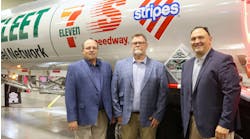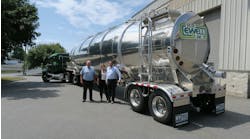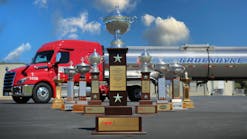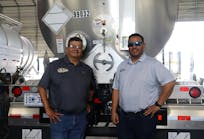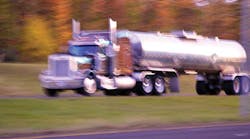CBP moving forward on manifest requirements for cargo tank residue shipments into US
CUSTOMS & Border Protection (CBP) recently announced in the Federal Register (August 27) that it plans to move ahead with its plans to require importation manifests for any cargo tank containing product residue. The ruling requires that product residue within containers be “classified, entered, and manifested.”
The Federal Register posting also announced a test program that was developed to determine a less burdensome way for shippers and carriers to manifest and enter residual cargo in Instruments of International Traffic (tank trailers, tank containers, and tankcars) while ensuring the safety and security of CBP officers. This test will allow a new type of entry to capture residue containers that will be cleaned or refilled that can be made off manifest through an indicator that identifies it as a Residue Entry.
National Tank Truck Carriers is calling on members to read the CBP Test Notice carefully and provide feedback, so NTTC can work with the industry coalition to minimize the potential burden for motor carriers. “We have been in limbo on this issue for quite some time now as you may recall from our ongoing updates,” says Fritz Mead, NTTC vice-president of government affairs and member services. “CBP is now introducing the pilot project under which carriers will be able to bring residue back into the country without making a formal entry. Your staff has worked closely on this issue with the ATA’s (American Trucking Associations’) director of cross-border policy, Margaret Irwin, who summarized the recent CBP action below:
“After many meetings and several years of waiting, Customs and Border Protection has issued the Notice for a test program for bringing residue back from Canada and Mexico. The notice contains the information we have been circulating for some time. Motor carriers must send the residue information to CBP in an electronic format. Empties must also be manifested (Note that since this is a “test” CBP can go outside of current regulations). Residue can be “manifested” as a Section 321, as long as its volume is less than 3% of the volume of the container. For the Section 321’s, if the freight has no commercial value, it can be manifested as $1 value, and CBP is working on allowing a $0 value in its ACE System. If the volume of the residue is more than 3% of the capacity of the container by weight or volume, the load must be manifested, with a formal entry.
International impact page 2...
“This test will commence 90 days after the date of publication in the Federal Register (November 25, 2013), and will run for one year. For 90 days after November 25, CBP will be doing “soft enforcement.” After that, trucks will be held at the border until a manifest is filed. CBP is not going to issue penalties, though. If any carrier does not want to participate in the test, the residue will be treated exactly like regular freight (ie, full manifest, entry, etc) Note that freight that has requirements imposed by other government agencies must still follow applicable regulations.”
Mead adds that NTTC staff has been meeting with Congressional staff in an effort to get Hill support for several initiatives, including getting a bill passed in Congress that would allow for residue to be manifested as “empty.” So far, NTTC has support in the House of Representatives and has begun working in the Senate. There is a stand-alone House bill, but NTTC may try to attach it to another bill.
During recent meetings with Congress, NTTC pointed out that there is a real possibility that if the paperwork to get residue back into the United States becomes too burdensome, the option is to clean tanks in Canada. This will have a negative impact on US jobs, and it will increase carrier costs. ♦
